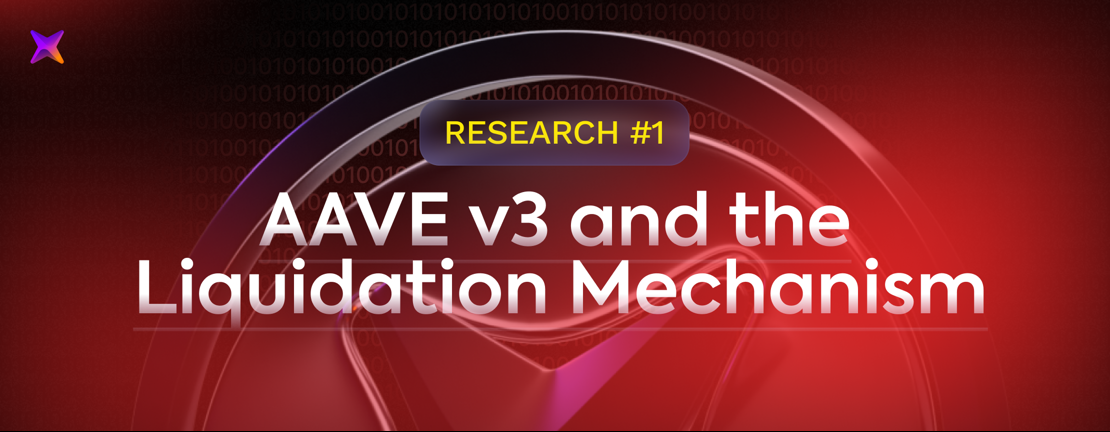 13 Feb 2025
13 Feb 2025RateX Research: AAVE v3 and the Liquidation Mechanism

On Monday, the market experienced massive liquidations. According to CoinGlass data, $2.21 billion worth of positions were liquidated on CEX in just 24 hours. The CEO of BYBIT believes the actual liquidation volume could have reached $8-10 billion.
In this context, let's take a closer look at how AAVE — one of the largest DeFi protocols — handles liquidations and the updates it's implementing.
What is AAVE?
AAVE is a DeFi protocol for lending and borrowing crypto assets, where users can earn on liquidity or take out loans with collateral.
Over the past three years, AAVE has captured 50% of the market, and with the forks that use AAVE's codebase, its market share rises to 75%.
How does liquidation work in AAVE?
Liquidation is the process of forcibly selling a borrower's collateral if their loan becomes insufficiently collateralized. In AAVE, there are two types of liquidations:
-
Automatic liquidation: Liquidators (bots or traders) identify these loans and close them, earning a liquidation bonus.
-
Manual liquidation: The borrower can liquidate their position themselves if they believe it is more beneficial.
Liquidation Process
- The liquidator identifies an under-collateralized loan.
- The amount of collateral required for repayment is determined.
- The liquidator initiates the liquidation via the AAVE protocol.
- The protocol sells part of the borrower’s collateral.
- The funds are directed toward repaying the loan, and the liquidator receives a reward.
This mechanism protects lenders from losses and ensures the stability of the protocol.
How to Calculate Collateral and Monitor Liquidation Risk?
To avoid liquidation, it’s crucial for the borrower to monitor their Health Factor (HF) in AAVE. It is calculated using the formula:
HF = (Collateral Amount * LTV) / Loan Amount
Where LTV (Loan-to-Value) is the maximum allowed ratio of loan to collateral (depending on the asset).
If the HF falls below 1, the asset enters the liquidation zone.
How to Avoid Liquidation?
- Monitor your HF: If it drops, you can add more collateral.
- Set up notifications: Use monitoring services like Dune Analytics, DeFiLlama, or DeBank.
- Avoid highly volatile assets.
How Did AAVE Handle Liquidations?
On February 3rd, AAVE faced its largest liquidation since August 2024, with over $200M worth of positions liquidated in just 24 hours. This represents about 30% of all liquidations since AAVE’s launch, but the volume of bad debt decreased by 2.7%.
For comparison, during the same period, the Compound v3 protocol had only $80M in liquidations.
What's New in AAVE v3?
The latest version of AAVE introduces several innovations:
- Capital Efficiency: AAVE v3 optimizes users' assets for maximum profitability and creditworthiness.
- E-Mode: Increases borrowing capacity when collateral and loan correlate in price.
- Isolation Mode: Isolated assets can only be used as collateral but retain their yield.
AAVE Updates
- AAVE v3.3: Updates the liquidation and debt management mechanisms. The improved liquidation process will reduce bad debt, and automated coverage for bad debt will increase the protocol's resilience.
- AAVE v4: A major update aimed at increasing yield and liquidity.
It introduces the following:
- Liquidity Hub — Centralized liquidity management to enhance efficiency.
- Risk Premiums — Dynamic calculation of risk premiums, lowering rates for reliable borrowers and improving returns for liquidity providers.
- Modular Architecture — Each Spoke (individual module) manages risks and functions separately, increasing capital efficiency.
In conclusion, AAVE continues to evolve, implementing innovative solutions to enhance efficiency, reduce risk, and improve liquidity, solidifying its position as a leading protocol in the DeFi space.
As the market adapts to changing conditions, AAVE’s ongoing updates will ensure it remains a key player in the future of decentralized finance.

 Get RateX Pro
Get RateX Pro
 06 Jun 2024
06 Jun 2024



